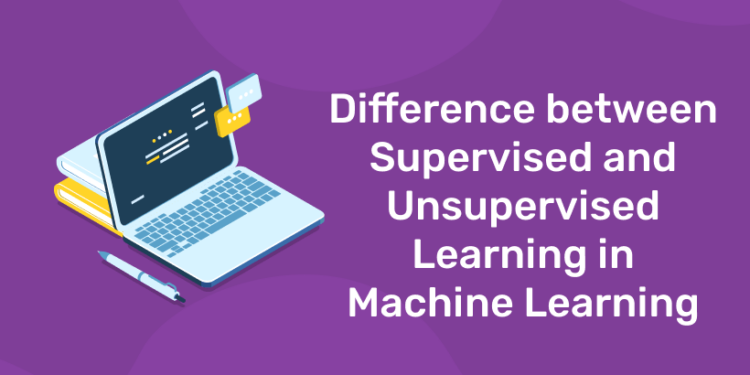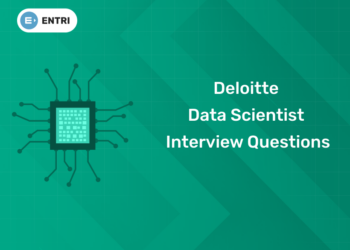Machine learning (ML) is an artificial intelligence application in which computer programs employ algorithms to detect patterns in data. They can do so without being particularly programmed to do so and without relying on people. Machine learning algorithms are at the heart of practically every artificial intelligence (AI) technical innovation and application on the market today. AI systems can generally plan, learn, reason, problem solve, perceive, move, and even control. One of the various methodologies utilized in AI systems is machine learning. Others include evolutionary computation and expert systems. Machine learning is used in many aspects of our daily lives.
“Get hands-on with our data science and machine learning course – sign up for a free demo!”
Consider how machine learning systems might affect your life. Machine learning is used to run recommendation systems on your favorite streaming services like Netflix or Spotify. Search engines use machine learning to clarify and optimize your search results. Social media channels recommend friends, groups, and videos to watch. If you have a modern fridge, these often learn when you use it the most and cool it in anticipation of dinner time.GPS anticipates which parts of your route will have heavy traffic and re-routes you using machine learning. Each of these platforms collects data from your everyday choices. It learns about you and uses that knowledge to anticipate what you’ll watch next when you’ll make dinner, and where you might travel or buy. All of this data fuels machine learning algorithms, which then assist brands in anticipating what they might want to do or buy next. Not only that but your preferences and dislikes are linked with data from millions of other people, allowing businesses to develop accurate and extremely effective suggestion lists.
Are you aspiring for a booming career in IT? If YES, then dive in |
||
Full Stack Developer Course |
Python Programming Course |
Data Science and Machine Learning Course |
Supervised Learning in Machine Learning
Supervised learning is a type of machine learning in which machines are taught with well-labeled training data and then predicted the output using that data. Labeled data indicates that some input data has already been marked with the appropriate output. In supervised learning, the training data provided to the computers act as a supervisor, teaching the machines how to accurately predict the output. It employs the same principle that a student would learn under the supervision of a teacher. The machine learns under observation in Supervised Learning. It includes a model that can forecast with the help of a labeled dataset. A labeled dataset is one in which the intended response is already known. There are mainly two types of supervised learning viz: Classification and Regression.
1. Classification
When the output variable is categorical, with two or more classes, classification is utilized. For instance, yes or no, male or female, true or false, and so on. To predict if a message is a spam or not, for example, we must first teach the machine what a spam message is. This is done using a variety of spam filters, which evaluate the content of the email, and the message header, and then search for any misleading information. Certain keywords and blacklist filters are used to blackmail spammers who have already been blacklisted. All of these features are used to score the letter and assign it a spam score. The lower the email’s total spam score, the less probable it is a hoax. The algorithm determines whether fresh incoming mail should be routed to the inbox or spam folder based on its content, label, and spam score.
Your first step towards Machine Learning career! Get a free demo
2. Regression
When the output variable is a real or continuous value, regression is utilized. There is a link between two or more variables in this example, which means that a change in one variable is related to a change in the other. Salary based on work experience, for example, or weight depending on height, etc. Consider the following two variables: humidity and temperature. The independent variable is temperature, while the dependent variable is humidity. When the temperature rises, the humidity falls. The model is fed these two variables, and the machine learns the link between them. After training, the system can easily forecast humidity based on the provided temperature.
The real-life applications of Supervised learning are:
- Visual Recognition
- Image Classification
- Fraud Detection
- Risk Assessment
Unsupervised Learning in Machine Learning
Unsupervised Learning involves machine learning on its own using unlabeled data. Unsupervised learning is the training of a computer utilizing information that is neither classed nor labeled and enabling the algorithm to act on such information without supervision. The machine’s objective in this case is to categorize unsorted data based on similarities, patterns, and differences without any prior data training. Unlike supervised learning, no teacher is provided, which implies the computer will not be trained. As a result, the machine is limited to discovering the hidden structure in unlabeled data on its own. It enables the model to function on its own to identify previously unnoticed patterns and information. It primarily works with unlabeled data. Unsupervised Learning is also categorized into two, viz: Clustering and Association.
1. Clustering
Clustering is the process of grouping objects into clusters that are comparable to one another but not to objects in another cluster. For example, determining whether customers purchased similar products. Assume a telecommunications business wants to reduce customer churn by offering tailored call and data plans. Client behavior is examined, and the model groups customers with similar characteristics together. Several tactics are used to reduce churn and maximize profit through appropriate marketing and campaigns.
2. Association
Association is a rule-based machine learning technique for determining the likelihood of elements in a collection co-occurring. Finding out which products were purchased together, for example. Assume a consumer goes to the grocery and purchases bread, milk, fruits, and wheat. Another customer arrives with bread, milk, rice, and butter. When another client walks in, it is very likely that if he buys bread, he will also buy milk. As a result, a relationship is formed based on client behavior, and recommendations are given.
- Examples of Unsupervised Learning
Let us see some of the examples of unsupervised learning in Machine learning.
- Hidden Markov Model
The Hidden Markov Model is another example of unsupervised machine learning. It is one of the more complex ML methods, consisting of a statical model that evaluates data properties and categorizes them accordingly.
- DBSCAN Clustering
Another way of clustering is DBSCAN Clustering, often known as Density-based Spatial Clustering of Applications with Noise. It is often used in data wrangling and data mining to investigate the structure of information, identify common features in data, and predict patterns based on data.
- K-Means Clustering
K-means clustering is the central technique in unsupervised machine learning activities. It is the method that specifies the features in the dataset and clusters specific bits with common elements.
Difference between Supervised and Unsupervised Learning
The two machine learning strategies are supervised and unsupervised learning. However, each technique is used in a different situation and with a different dataset. Below is a description of both learning methods, as well as a comparison table.
| Supervised Learning | Unsupervised Learning |
| The supervised learning model uses direct feedback to determine whether or not it is forecasting the correct output. | The unsupervised learning model receives no feedback. |
| In supervised learning, the model is fed input data as well as output data. | Unsupervised learning presents the model with only input data. |
| Supervised learning necessitates supervision in order to train the model. | Unsupervised learning requires no supervision to train the model. |
| Supervised learning can be employed in situations when we know both the input and the outcome. | Unsupervised learning can be employed when we only have input data and no corresponding output data. |
| Supervised learning is nowhere near to actual AI because it requires us to train the model for each input set before it can anticipate the proper result. | Unsupervised learning is closer to true AI since it learns in the same way that a child learns daily routine things through his experiences. |
| The purpose of supervised learning is to train the model such that it can anticipate the result when new data is provided. | Unsupervised learning seeks to discover hidden patterns and helpful insights in an unknown dataset. |
| The supervised learning model yields correct results. | Unsupervised learning models may yield less accurate outcomes than supervised learning algorithms. |
be a data scientist with entri’s online course ! join now !
Wrapping Up
Machine Learning is the science of teaching computers to learn and act like people by providing them with data and information without directly programming them. Training data is used to train machine learning algorithms. When fresh data arrives, they can make accurate predictions and judgments based on previous data. Machine learning is classified into two types: supervised and unsupervised learning. This page discusses the important points regarding these types and difference between supervised and unsupervised Learning.










